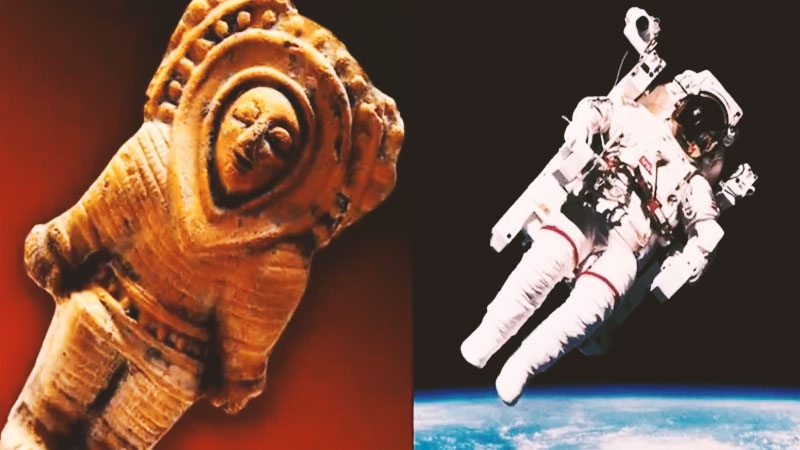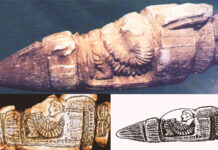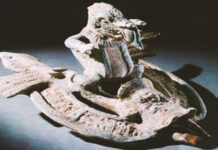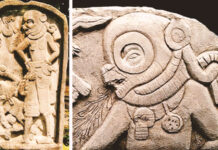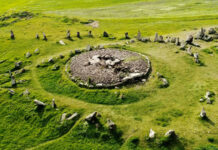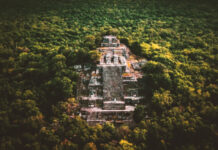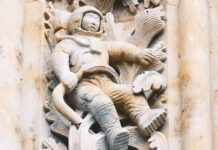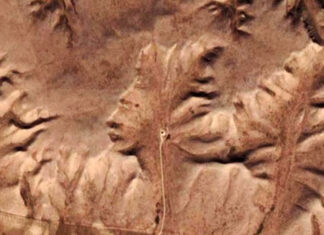Jama Coaque is an archaeological culture that settled in the north of the current Province of Manabí, Ecuador, between the Coaque and Jama rivers, from which it gets its name.
This ancient culture, which thrived between the years 355 BC and 1532 AD, was characterized by a profuse and detailed ceramic art. The figurines are described as a great “treasure trove of art” and were made of both stone and metal, but mostly ceramic.
The most relevant feature of Jama Coaque art is the abundance of many depictions of men in strange costumes that Ancient Astronaut Theorists suggest are undeniably similar to a modern astronaut in helmets and spacesuits, while others are equipped with wings.
These artifacts are on display in some museums located near Cuenca, Ecuador, the small town where Father Carlo Crespi moved in 1927.
He dedicated much of his life to charitable works, living with local natives, such as the Jibaro tribe, who donated to Father Crespi hundreds of archaeological artifacts found in the so-called “Cueva de los Tayos”, a very deep cave, located in a remote region of the Amazon known as Morona Santiago.
This mysterious cave became famous in 1976, when an important expedition was organized by Stanley Hall and had the participation of Neil Armstrong, the first astronaut who walked on the Moon in 1969.
Regarding this expedition, the astronaut reported that the three days he spent inside the cave were much more significant than his legendary trip to the Moon.
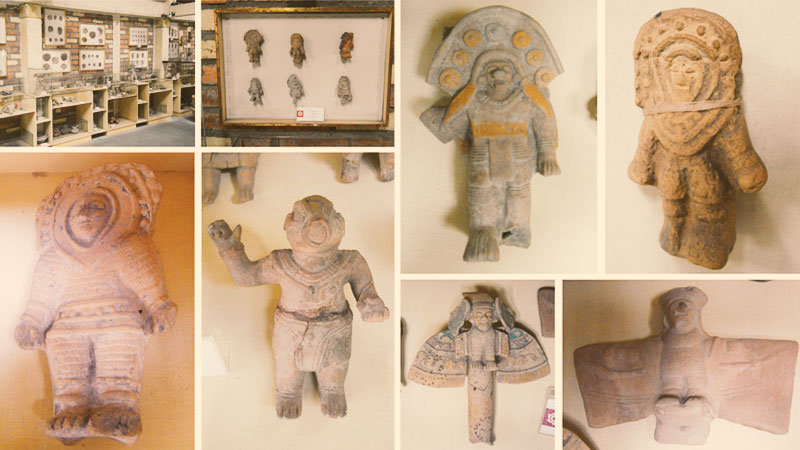
Father Crespi initially kept these finds secret, especially for fear that someone might appropriate them, taking them away from the Indian tribes as well.
In 1960, thanks to an authorization from the Vatican, he managed to create a museum in the Salesian mission of Cuenca, where the mysterious works found by the local natives were exhibited.
When Father Crespi died in 1982, the “Crespi Museum” was closed and the artifacts were looted by unknown people.
Today, the center of Cuenca is a UNESCO World Heritage Site and several truly intriguing artifacts have been brought to light, such as some figurines, now preserved in the “Museo de los Aborigenes” in Cuenca.
Over the past two centuries, researchers have discovered artifacts and incredible constructions indicating that there were advanced civilizations in the distant past, with such sophistication, that they have left enigmatic evidence of the use of technological devices, but conventional science seems to have eliminated, ignored or forgotten these remarkable facts.
Nowadays, many researchers question traditional science, denounce the manipulation of knowledge and challenge us to rethink the understanding of the origins, identity and destiny of humanity.

